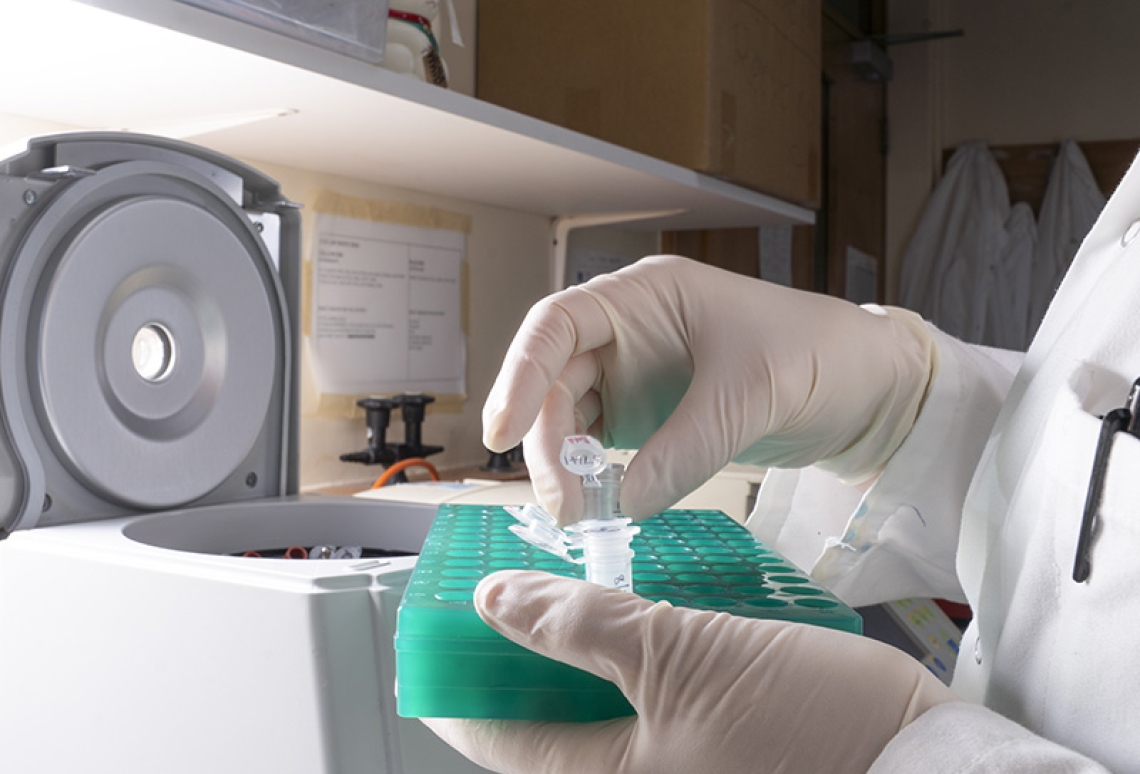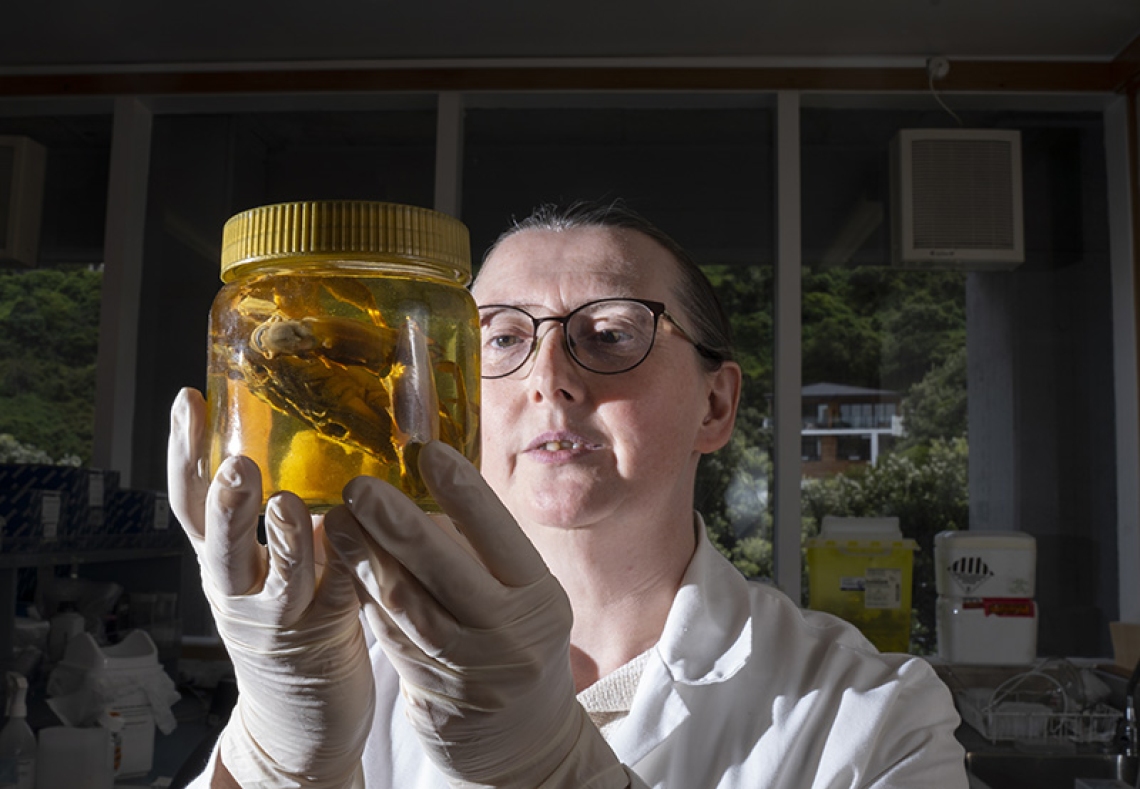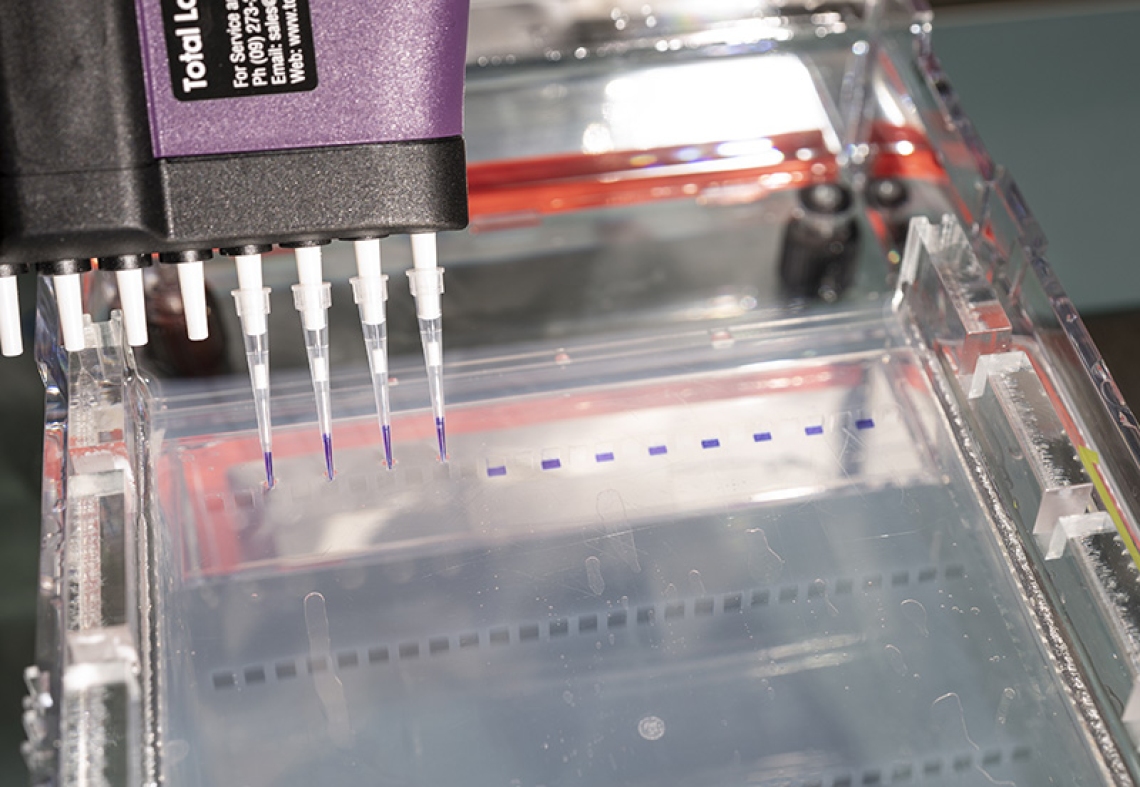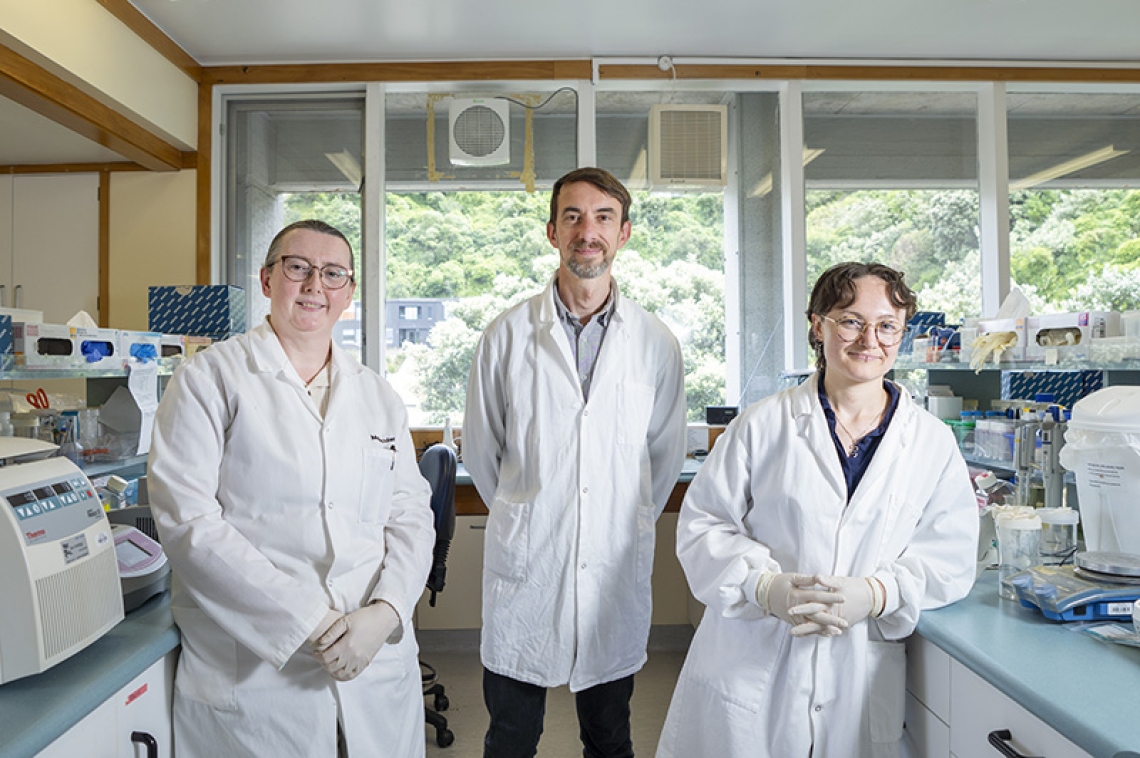Environmental DNA (eDNA) is a burgeoning field of research in Aotearoa/New Zealand, with applications in biomonitoring, biosecurity, ecology and conservation.
It is most effective as a complement to traditional approaches such as visual surveys, rather than as a replacement or proxy for them. See the list of the benefits and limitations of eDNA surveillance.
NIWA is active in a broad range of eDNA topics and can provide expert advice on applications and expected outcomes. We welcome inquiries into our services and can assist with experimental design.
Our Service & Capability:
The molecular biology team at NIWA is experienced in biodiversity discovery, molecular biology and ecology, molecular diagnostics, systematics, and evolutionary biology in marine and freshwater environments.
Our team is proficient in sample preparation and has expertise in processing and producing data from problematic samples—including fixed, dried and degraded samples from tissue samples, filtered water, gut contents and sediments. We develop both metabarcoding and targeted eDNA assays and routinely contribute advice on eDNA assay design, including marker selection, assay validation and recognition of limitations. We also undertake data production and analysis.
NIWA’s molecular biology labs contain a modern suite of equipment for conducting eDNA research, including automated DNA quality control systems and both droplet digital and quantitative PCR (ddPCR and qPCR) systems for eDNA detection and quantification. Our labs operate within NIWA’s transitional facility and adhere to PC-2 standards.
Our facilities include a biosecure Marine Environmental Manipulation Facility (MEMF), in which live experiments for eDNA calibration and validation can be conducted under controlled conditions. Our work is funded and supported by regional and central governments and contestable and strategic science funding programs.
Our Projects:
Characterisation of plankton communities in oceanic systems
Using eDNA metabarcoding to examine the diversity of microplankton communities in open ocean systems around New Zealand. This work characterised the biogeography and ecological preferences of the protist taxa found in major physical oceanographic features.
Quantification of kelp contributions to blue carbon sequestration in deep-sea sediments
Measurements of the transport of blue carbon from nearshore kelp beds into deep-sea sediments using eDNA as a biomarker. Determining the biomass of kelp sequestered in the deep-sea will establish the conservation value of inshore kelp beds and determine the efficacy of kelp aquaculture as a carbon mitigation strategy.
Dietary analysis of freshwater fish to inform trophic structure
Using eDNA metabarcoding of invertebrate communities present in the gut contents of freshwater bullies. The taxonomic composition of fish diets is used construct food webs and examine changes in trophic structure and differences between river catchments and fish species.
Surveillance tools for aquatic pests and diseases
Validation and implementation of targeted eDNA assays for surveillance of nonindigenous marine species. Targeted eDNA detection in seawater samples allows for fast and sensitive detection of pest species and is used as a rapid initial assessment of their spread and distribution.
Microbial profiling to inform functional ecology of benthic ecosystems
Metabarcoding of bacteria with functional analysis based on community composition. Functional classification of marine environments provides a rapid environmental health assessment and establishes the trophic state and primary bacterial constituents of benthic ecosystems.
Development of curated eDNA reference libraries for marine habitats
DNA sequencing of expert-identified voucher specimens for compilation into curated reference libraries for taxonomic assignment of eDNA survey data for marine algae and invertebrates. This improves the accuracy and confidence of species-level eDNA detection and characterisation.
Detection of endangered taonga species in coastal environments
Custom eDNA assay design for detection of taonga species, to inform distribution mapping and conservation efforts. Surveillance with sensitive eDNA assays provides an indirect means to determine the limits of the distribution of endangered and fragile species using non-invasive methods.
Our Expertise:
Development of eDNA reference libraries
Without reference DNA sequences from reliably identified representatives of various marine species, eDNA cannot provide confident species-level detections. Our team is working with taxonomic experts to build reference databases for inshore marine species that are likely to be encountered in eDNA surveys. This includes generating reference sequence datasets for marine algae, nonindigenous ‘pest’ species, and regionally significant collections of benthic macroinvertebrates.
Custom development and validation of molecular tools for species detection
By leveraging the high sensitivity and reproducibility of our droplet digital PCR system, NIWA’s molecular biologists have produced bespoke eDNA assays targeting a wide range of organisms and topics. These includes the detection of terrestrial plant eDNA in deep-sea sediments, detection and quantification of kelp eDNA for blue carbon assessments, and the detection of taonga species from seawater and sediments along our coastlines.
Biodiversity surveys for ecosystem and dietary assessments
Our team has produced various eDNA-based assessments of community diversity, using amplicon metabarcoding of bacterial and eukaryotic communities. Standard applications include measuring protist diversity in pelagic water masses and bacterial profiling in deep-sea sediments and we have designed custom eDNA assays for measuring the breadth of invertebrate diversity in the dietary composition of freshwater bullies (Gobiomorphus spp.), and for measuring the terrigenous contribution of land plants in deep-sea marine sediments.
eDNA Research: Benefits and Limitations
The recent expansion and uptake of eDNA applications in environmental sciences has reflected the increasing body of research into novel applications, such as targeted biosecurity surveillance, population genetics and dietary analysis. However, as with any new technology, both the benefits and the limitations of eDNA-related methods should be considered prior to adopting it into new or existing approaches. If you are considering eDNA as a tool for environmental sciences, it is worth considering the following benefits and limitations. These lists are not exhaustive, and we invite you to contact us for discussions about whether eDNA approaches are right for you.
Broad scale/community eDNA applications
Typically employing amplicon metabarcoding, using one or more genetic markers.
Benefits |
Limitations |
|
Sample collection non-invasive and only requires proximity to community of interest (eg. associated water collection). |
Taxonomic biases due to differential rates of eDNA shedding, degradation, transport. |
|
Sample processing quick and requires non-specialist skills (eg. water filtration, sediment scoop). |
Samples require immediate preservation via freezing, addition of a preservative or desiccation. |
|
Can provide higher taxonomic resolution for cryptic communities (eg. invertebrates, protists). |
Taxonomic assignments can be misled by incorrect or incomplete reference libraries. |
|
eDNA read abundance is indicative of relative biomass contributions of different constituent taxa. |
Read abundance does not reflect taxon prevalence and should not be used for quantitative assessments. |
|
Presence and read abundance can be confounded by eDNA input from dead organisms or transport from external sources (eg. terrestrial runoff into riverine systems). | |
|
Provides complementary evidence to visual or morphological survey methods. |
Cannot replace traditional survey methods due to false-negative errors errors and lack of quantification. |
|
Methods can be applied to many sample types: water, sediments, gut contents, biofilms, etc. |
Differences in eDNA extraction methodology for different sample types could lead to biases in resulting data. |
Targeted (taxon-specific) eDNA applications
Species-specific detection using targeted ddPCR or qPCR.
Benefits |
Limitations |
|
Sample collection non-invasive and only requires proximity to organism of interest (eg. associated water collection). |
Detection is not certain, and significance of false-negative errors can be difficult to assess. |
|
Sample processing quick and requires non-specialist skills (eg. water filtration, sediment scoop). |
Samples require immediate preservation via freezing, addition of a preservative or desiccation. |
|
Provides higher detection sensitivity than metabarcoding-based approaches. |
Requires validation process to properly assess limits of sensitivity and specificity. |
|
Outputs can be treated as quantitative data. |
Calibration of qPCR/ddPCR quantitation to target organism abundance needs to be established experimentally. |
|
Provides complementary evidence to visual or morphological survey methods. |
Cannot replace traditional survey methods due to false-negative errors and non-linear relationships between eDNA abundance and taxon abundance. |
|
Methods can be applied to many sample types: water, sediments, gut contents, biofilms, etc. |
Differences in eDNA extraction methodology for different sample types could lead to biases in detection sensitivity. |









